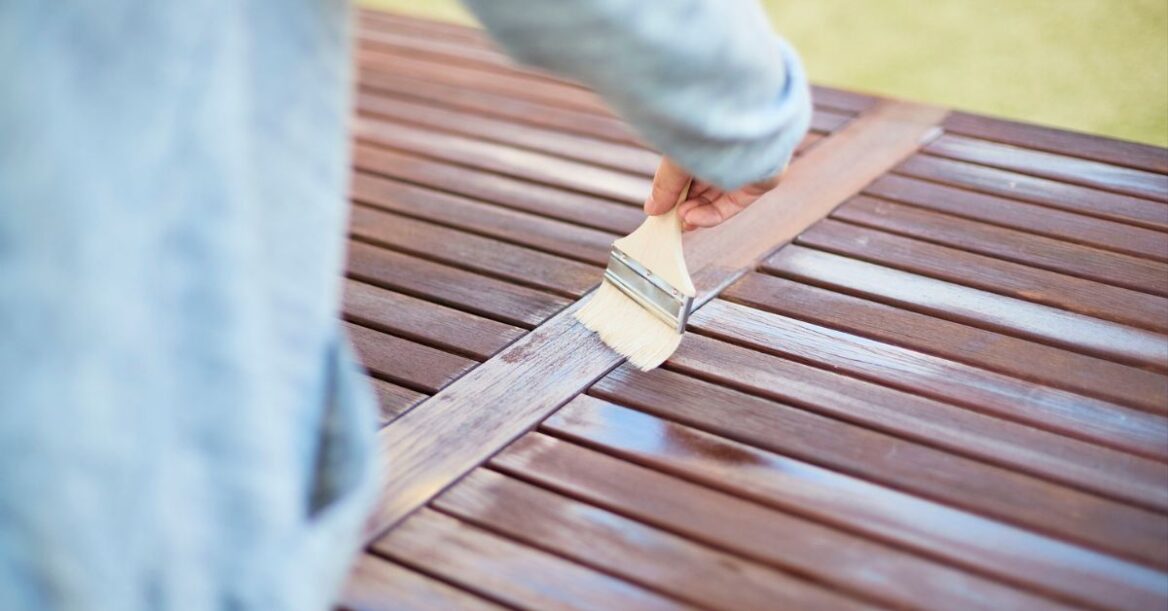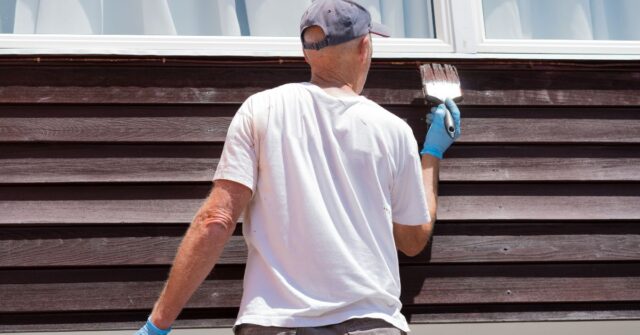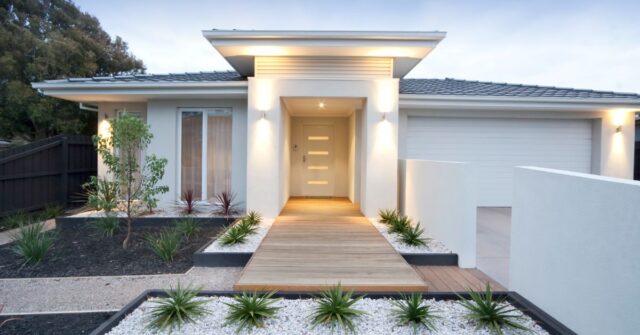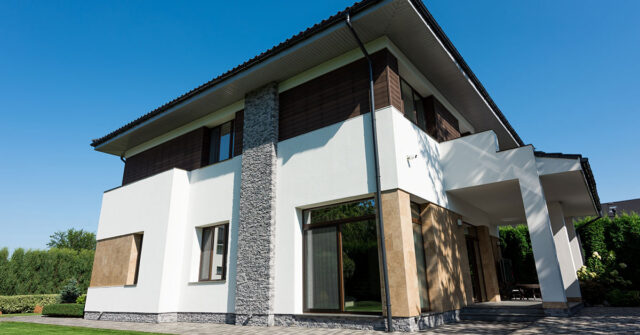If your deck is looking tired, weathered, or faded, you might be wondering whether it’s better to paint or stain it.
Both options can completely transform your outdoor space, but the right choice depends on your deck’s condition, the look you want, and how much maintenance you’re willing to do.
As Sydney’s trusted painting professionals, Advanced Painting has helped countless homeowners refresh and protect their decks.
In this guide, we’ll compare painting and staining in detail so you can make the right decision for your home and lifestyle.
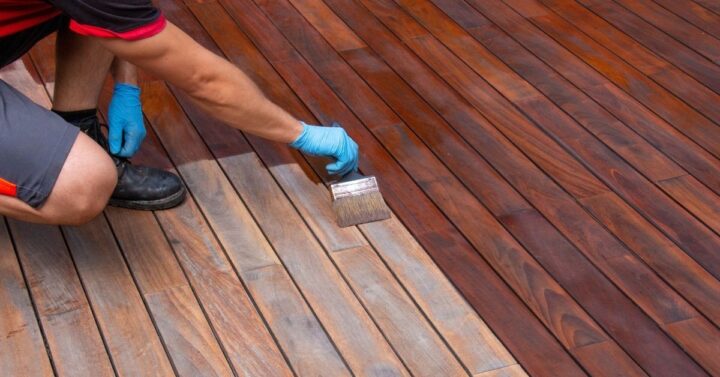

Understanding the Difference Between Painting and Staining a Deck
Before choosing a finish, it helps to understand how paint and stain work.
Deck paint creates a film that sits on top of the timber, sealing it from moisture, UV rays, and general wear.
It hides imperfections, evens out colour, and allows you to match or contrast with your home’s exterior.
Deck stain penetrates into the wood fibres to enhance the natural grain. It provides a warm, natural finish while offering moderate protection against the elements.
There’s also decking oil, often considered a third option. It nourishes the timber, helps prevent cracking, and leaves a low-sheen finish.
Oils suit those who want a raw timber look but are happy to reapply more frequently.
In Sydney’s harsh climate, UV exposure and humidity can quickly wear down low-quality finishes.
Hardwoods like Merbau and Spotted Gum absorb stain well, while softer treated pine may benefit from the added durability of paint.


Paint vs Stain – Pros and Cons Compared
Choosing between paint and stain comes down to priorities such as appearance, longevity, and upkeep. Here’s how they compare:
| Feature | Paint | Stain |
|---|---|---|
| Appearance | Solid colour, hides grain and imperfections | Enhances natural grain and texture |
| Durability | Long-lasting, seals from moisture and UV | Easier to maintain but less durable |
| Maintenance | May peel or chip over time | Fades gradually, easy to refresh |
| Cost | Slightly higher upfront | Lower initial cost but more frequent recoats |
| Slip Resistance | Can be slippery when wet | Generally better traction |
| Heat Retention | Dark colours can get hot underfoot | Cooler to walk on in summer |
Paint – Pros and Cons
Painting your deck offers one of the most durable finishes available. It’s ideal for older or uneven decks that need a fresh, uniform look.
When applied correctly, high-quality exterior paints can last for years with minimal upkeep.
Advantages:
- Excellent protection from UV, rain, and mould
- Wide colour range for design flexibility
- Great for covering stains or previous coatings
Drawbacks:
- It can peel or crack over time if the preparation is poor
- Harder to touch up small areas
- May retain heat or become slippery when wet
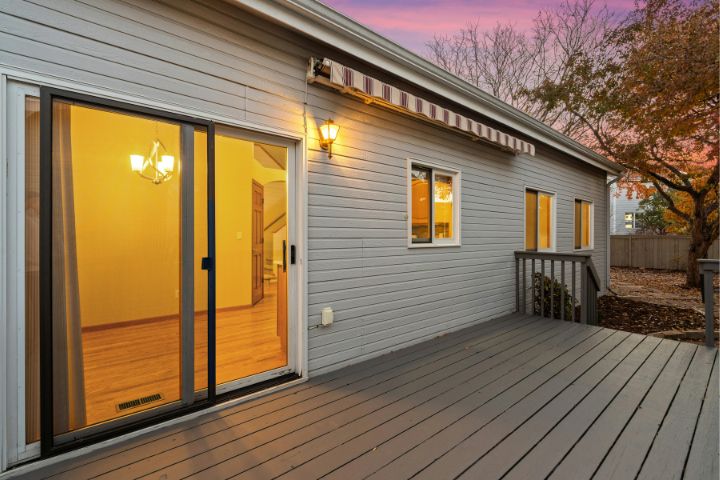

Stain – Pros and Cons
Staining a deck brings out the timber’s natural beauty and is often preferred for newer or premium hardwood decks. It offers a more organic, rustic aesthetic and is easier to maintain over time.
Advantages:
- Enhances the natural texture and colour of wood
- Simple to reapply without sanding back completely
- Doesn’t peel or flake like paint
Drawbacks:
- Provides less UV and water resistance
- Requires recoating every couple of years
- Limited colour choices compared to paint
How Long Do Deck Paint and Stain Last in Australia?
Sydney’s climate is tough on outdoor surfaces, so lifespan varies depending on sun exposure and preparation.
A properly painted deck can last 5 to 10 years before needing a refresh, especially when using premium paints like Dulux Weathershield or Taubmans Endure.
Stained decks generally need maintenance every 2 to 4 years, depending on exposure and product quality.
Decks that face full sun, heavy rain, or pool splashing will naturally wear faster. Regular cleaning and periodic topcoats can extend the life of any finish.
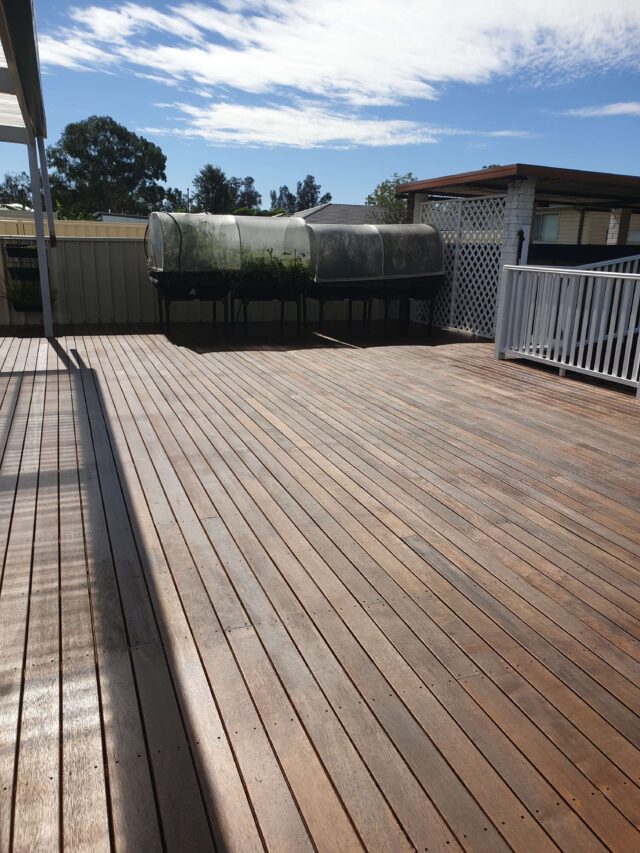

Which Option Suits Your Deck Best?
Every deck and homeowner is different. The best choice depends on your timber, environment, and how much maintenance you want to do.
Choose paint if:
- Your deck is older or already coated
- You want a solid, modern colour scheme
- You prefer a longer-lasting protective finish
Choose stain if:
- You love the look of natural timber
- You don’t mind reapplying every few years
- Your deck is made from hardwoods like Merbau or Spotted Gum
For poolside decks or high-traffic areas, stains or textured paints can help prevent slipping and heat buildup.
Preparation and Application Tips from Sydney Deck Painting Experts
Whether painting or staining, preparation makes all the difference. A rushed or uneven surface will shorten the life of your finish.
At Advanced Painting, our professional process ensures superior results:
- Clean and sand the deck to remove dirt, mildew, and old coatings
- Repair and fill any damaged areas for a smooth base
- Prime before painting to ensure strong adhesion
- Use premium products like Dulux or Taubmans for UV protection and durability
- Apply evenly under mild weather conditions for best curing results
DIY projects often fail due to skipped prep or poor product choice. With over 20 years of experience, our Sydney painters know how to achieve a flawless finish that lasts.
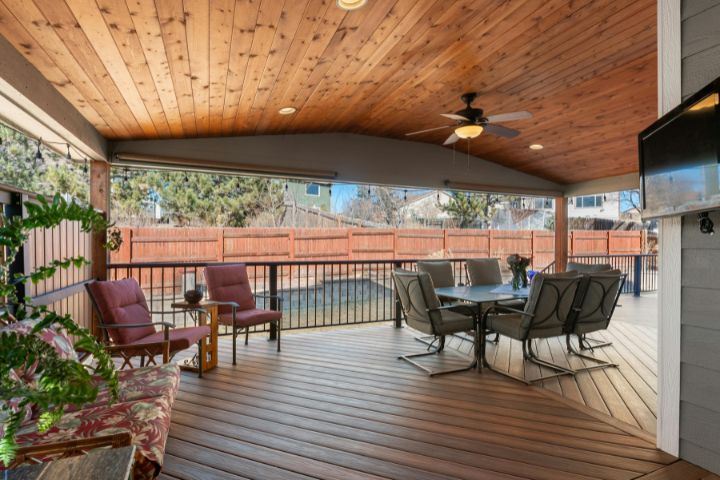

When to Repaint or Restain Your Deck
Even the best finishes need maintenance eventually.
You’ll know it’s time to recoat when you notice:
- Fading or discolouration
- Water soaking into the timber instead of beading
- Peeling, flaking, or rough patches
In general, Sydney decks should be:
- Repainted every 5-8 years
- Restained every 2-3 years
Regular cleaning and touch-ups between full recoats will keep your deck protected and looking its best.
Common Questions About Painting vs Staining Decks
Is it better to paint or stain a deck in Sydney’s climate?
Paint offers stronger protection against UV and moisture, while stain provides a natural look with easier maintenance. Both can work well when applied correctly.
Can you paint over a stained deck or stain over paint?
Yes, but preparation is critical. The surface must be sanded and cleaned thoroughly, and primer may be required for paint.
Does paint make a deck slippery?
Some paints can be slippery when wet. Use non-slip or textured finishes to improve safety.
Which option is more cost-effective?
Paint typically lasts longer, offering better long-term value. Stain costs less upfront but requires more frequent recoating.
What’s best for poolside decks?
Stains or non-slip coatings are ideal because they resist peeling and stay cooler underfoot.
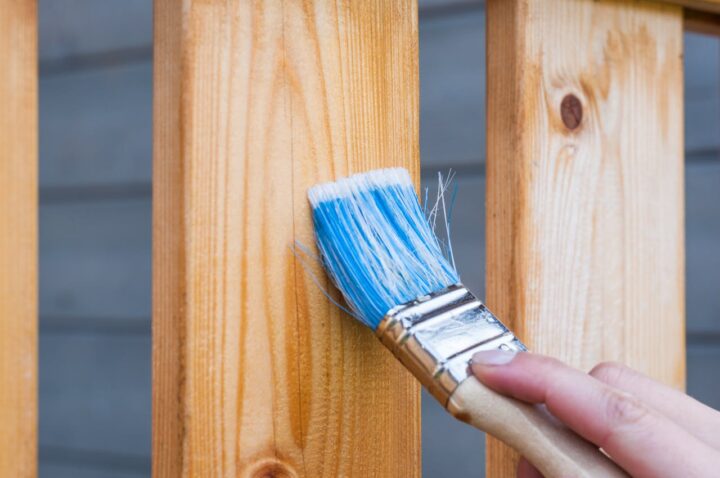

Professional Help for Deck Painting or Staining in Sydney
If your deck needs a refresh, Advanced Painting can help you achieve a professional, lasting finish.
Our Sydney-based team is fully insured, OH&S compliant, and backed by a 5-year workmanship warranty.
We use trusted brands like Dulux and Taubmans and take pride in delivering clean, respectful service and competitive pricing.
Whether you want a natural timber finish or a bold, painted transformation, our experts will handle everything from preparation to final coat.
Get a free, no-obligation quote today and see why homeowners across Sydney choose Advanced Painting for quality, reliability, and precision in every stroke.
Sydney’s Trusted Painting Professionals – Precision in Every Stroke.

